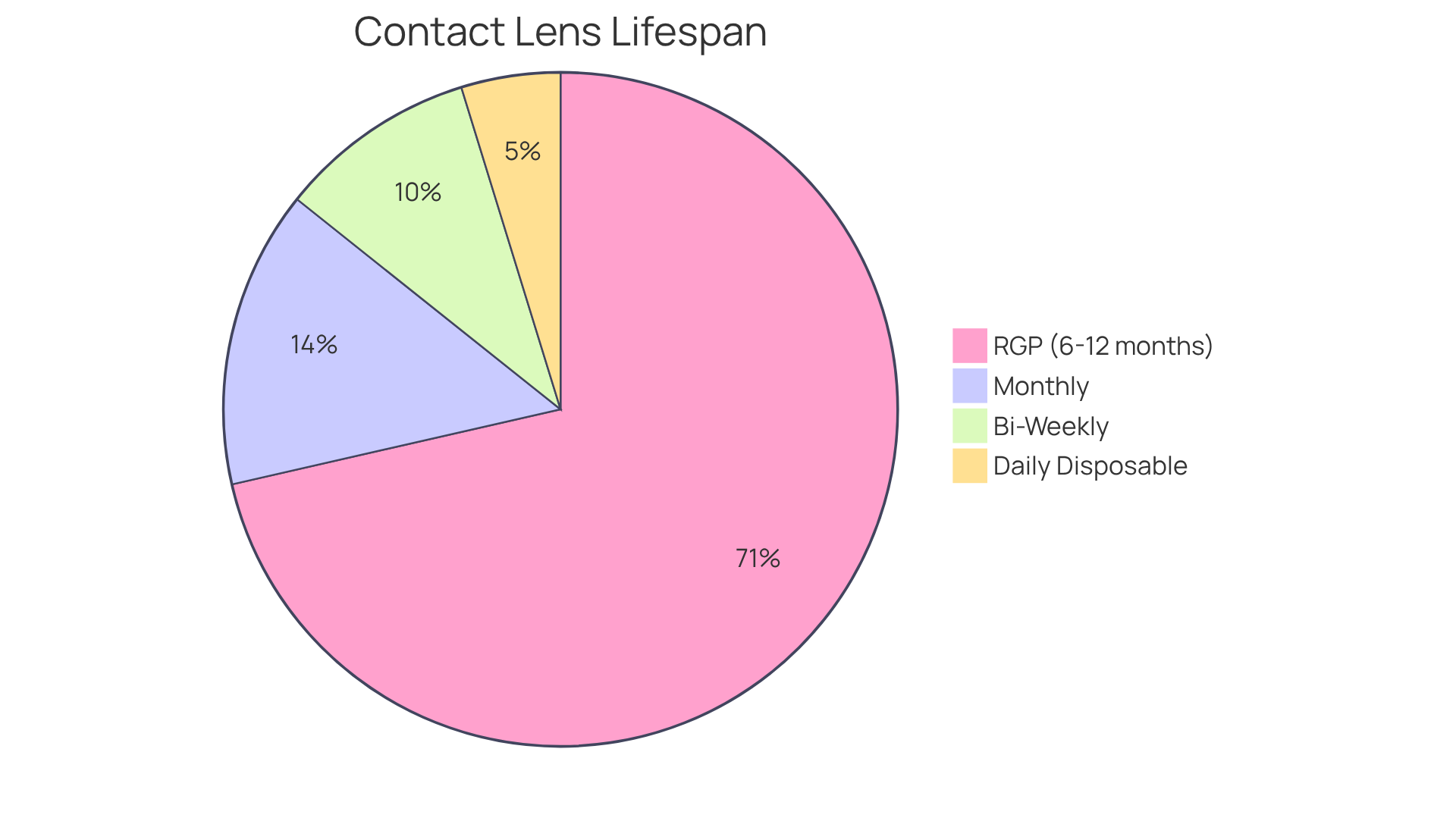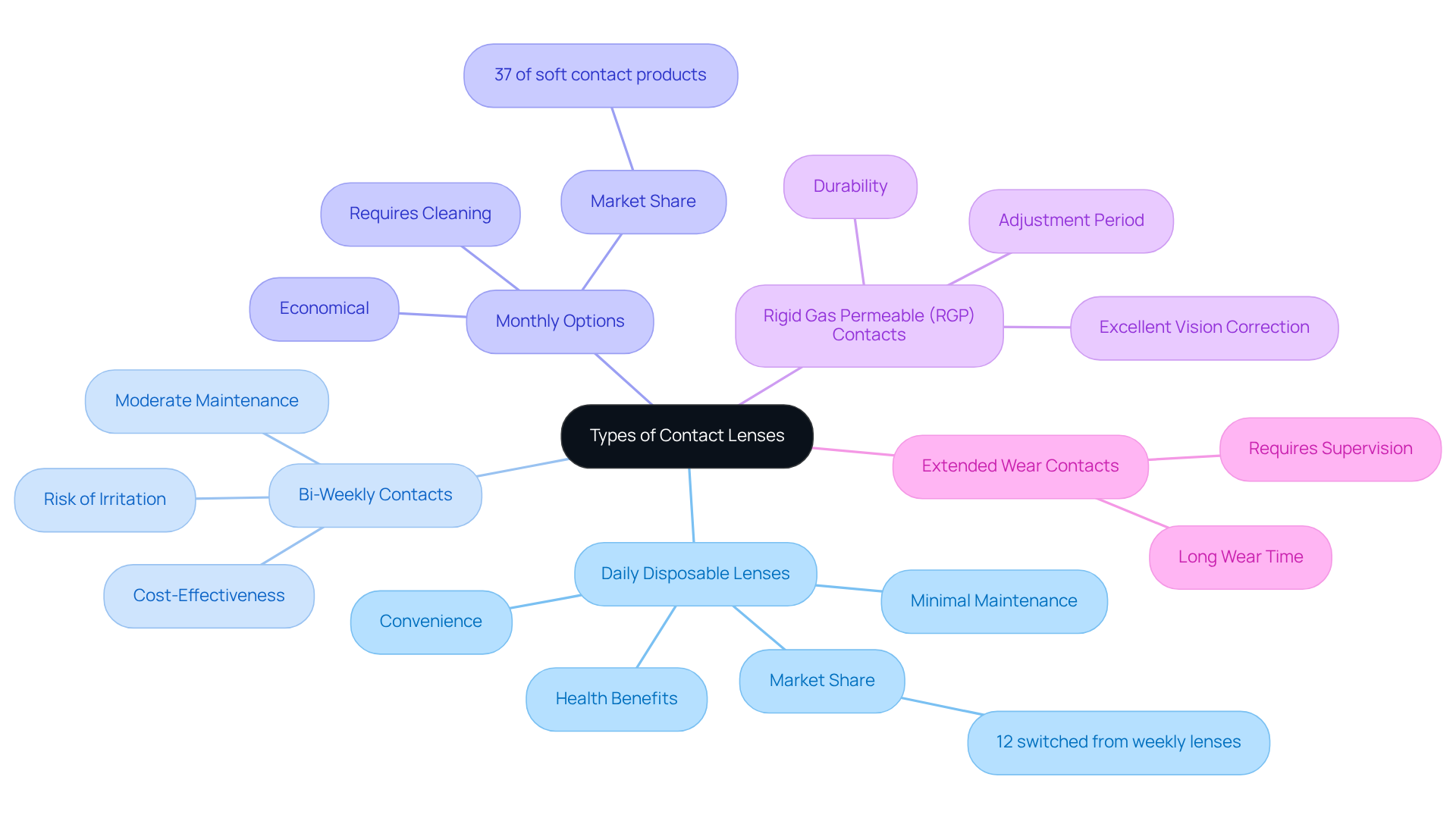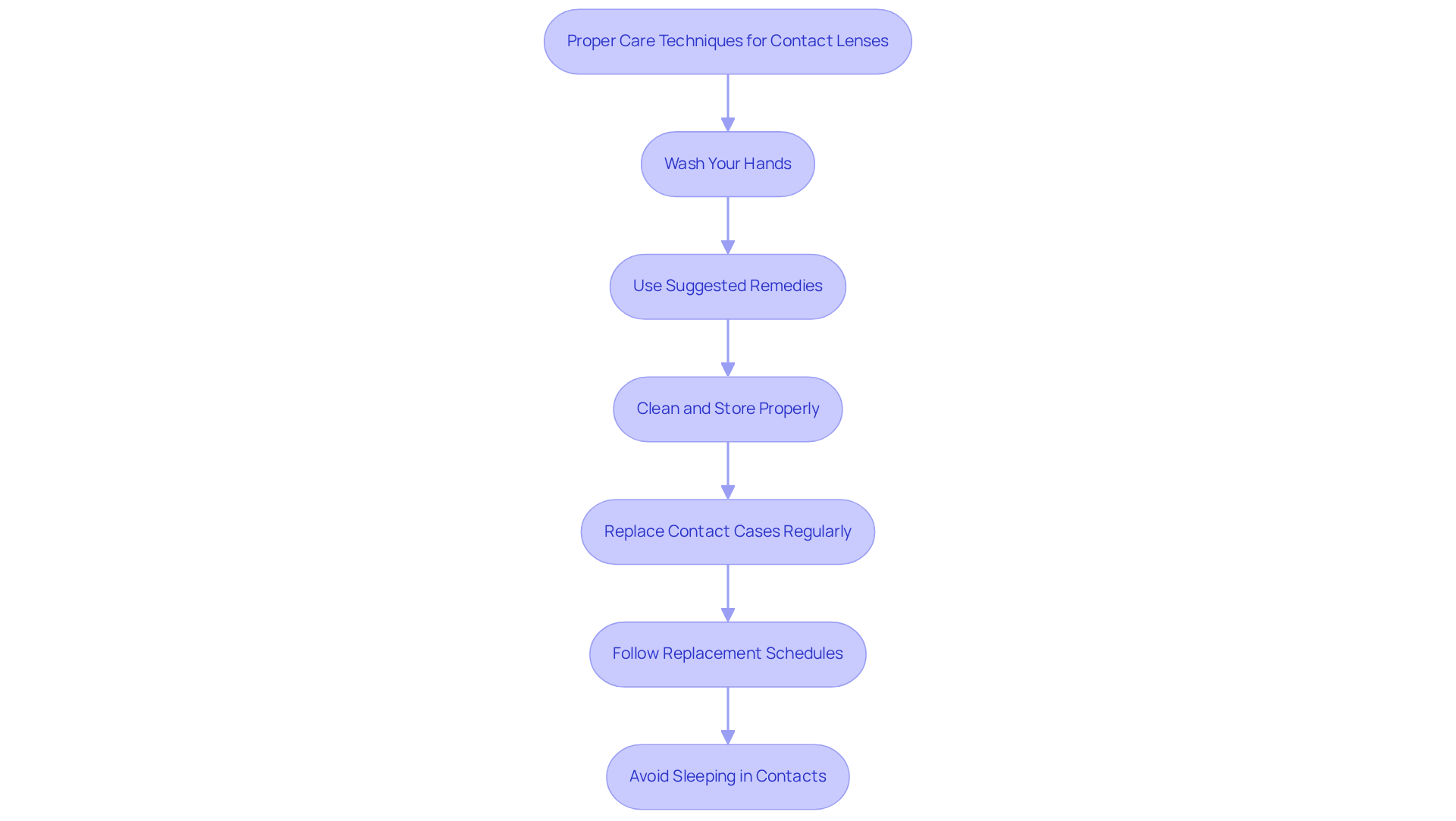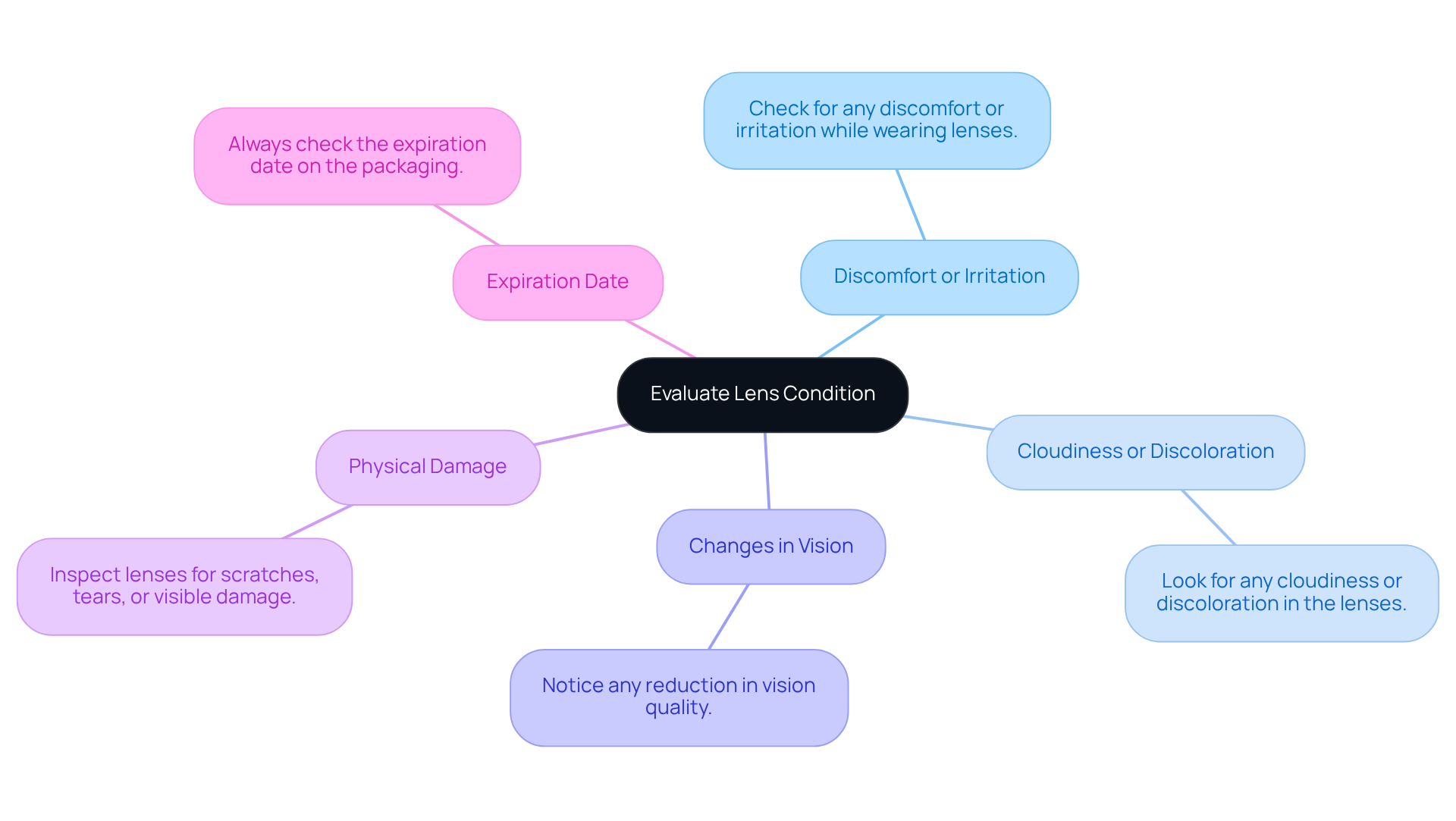Posted by: Northwest Eye in Advanced Lenses on October 24, 2025
Overview
Contact lenses vary in lifespan depending on their type:
- Daily disposables last for one day
- Bi-weekly lenses can be used for up to two weeks
- Monthly lenses are good for 30 days
- Rigid gas permeable lenses can last from six months to a year
We understand that choosing the right contact lenses can be overwhelming. It’s important to know that proper care and adherence to replacement schedules are crucial for maintaining your eye health and comfort. Neglecting these guidelines can lead to complications such as infections and discomfort, which we want to help you avoid.
By taking the time to follow these recommendations, you can ensure a more comfortable experience with your lenses. Remember, we are here to help you through this process and support you in making the best choices for your eye care.
Introduction
Understanding the lifespan of contact lenses is essential for anyone who relies on them for vision correction. We understand that with various types available, from daily disposables to rigid gas permeable options, each comes with its own set of guidelines for longevity and care.
It’s common to feel overwhelmed by the details, but proper maintenance is critical. Neglecting this aspect can significantly impact your eye health and comfort.
How can you ensure you’re maximizing the lifespan of your lenses while minimizing the risk of complications? We are here to help you through this process.
Understand Contact Lens Lifespan
Contact optical devices come in various types, each with a specific duration, leading to the important question of how long do contacts last, which is vital for your eye health. Daily disposable contacts are designed for one-time use and should be discarded after a day, ensuring optimal cleanliness and comfort. We understand that maintaining your eye health is a priority, and as Dr. Tiffany Gates notes, ‘Contact devices rest directly on your cornea,’ making proper care essential.
When considering how long do contacts last, bi-weekly contacts can be worn for up to two weeks, while monthly options typically need to be replaced every 30 days. The lifespan of rigid gas permeable (RGP) contacts raises the question of how long do contacts last, which can be from six months to a year depending on maintenance. It’s common to feel concerned about the risks associated with contact lens wear, and it’s important to note that you are up to eight times more likely to develop an eye infection if you sleep in your lenses, according to the Centers for Disease Control and Prevention.
Understanding how long do contacts last is crucial for maintaining your eye health and comfort, as improper use can lead to complications such as infections. Always refer to the manufacturer’s instructions for specific recommendations regarding your eyewear. Remember, prompt replacement is key to avoiding issues like dryness and irritation. We are here to help you through this process, ensuring your eyes stay healthy and comfortable.

Explore Types of Contact Lenses
Contact lenses come in several types, each catering to different needs and lifestyles:
-
Daily Disposable Lenses: Designed for one-time use, these lenses are discarded at the end of the day. They are an excellent choice for those seeking convenience and minimal maintenance. Daily disposables are less likely to cause discomfort and reduce the risk of eye infections due to their hygienic nature. Research indicates that daily disposable contacts are less likely to harm the corneas compared to reusable options, making them a healthier choice for many patients.
-
Bi-Weekly Contacts: These items can be used for up to two weeks but require daily cleaning and proper storage. They strike a balance between convenience and cost-effectiveness, appealing to users who prefer a longer wear time without the daily disposal. However, it’s important to note that they do carry a risk of irritation and deposits that can affect vision if not maintained properly.
-
Monthly Options: Appropriate for up to 30 days, monthly options require consistent cleaning and storage every night. While they are generally more economical, they require diligent maintenance to prevent irritation and deposits that can affect vision. About 37% of the market share for soft contact products is held by monthly varieties, reflecting their popularity among users.
-
Rigid Gas Permeable (RGP) Contacts: Recognized for their durability, RGP contacts can last from six months to a year with proper care, which leads to the inquiry of how long do contacts last. They offer excellent vision correction but may require an adjustment period for new users. Many patients frequently indicate enhanced comfort and visual clarity after adjusting to these corrective devices.
-
Extended Wear Contacts: These products can be worn continuously for several days or weeks, which leads to the question of how long do contacts last, depending on the specific type. However, they necessitate meticulous supervision to prevent complications, making them appropriate for individuals who can follow stringent management guidelines.
Choosing the right type of contact lens should correspond with your personal lifestyle, comfort preferences, and vision requirements. We understand that this decision can feel overwhelming, and consulting with an eye specialist can assist in identifying the best choice for optimal eye health. As Dr. Megan Baldwin emphasizes, “Your relationship matters,” underscoring the significance of tailored support in choosing the appropriate eyewear. Moreover, numerous producers provide recycling initiatives for vision aids, tackling environmental issues and encouraging sustainability.

Implement Proper Care Techniques
To ensure the longevity of your contact lenses and maintain optimal eye health, we understand how important it is to adhere to effective care techniques:
- Wash Your Hands: We cannot stress enough the importance of cleansing and drying your hands thoroughly before handling your contacts. This simple practice is crucial to prevent the transfer of dirt and bacteria that can lead to infections.
- Use Suggested Remedies: Always employ the solution recommended by your eye care expert. It’s common to wonder about alternatives, but please avoid using water or saliva, as these can introduce harmful microorganisms.
- Clean and Store Properly: After taking out your contacts, clean them with fresh solution, gently rubbing them to eliminate debris. We encourage you to store them in a clean case filled with fresh solution to maintain their integrity.
- Replace Contact Cases Regularly: Remember to change your contact case every three months or whenever you buy a new bottle of solution. This helps minimize contamination risks and keeps your eyes healthy.
- Follow Replacement Schedules: Adhering to the suggested replacement timeline for your eyewear is vital. Overwearing can lead to discomfort and increase the risk of eye infections, including serious conditions like microbial keratitis.
- Avoid Sleeping in Contacts: Unless specifically designed for extended wear, always take out your contacts before sleeping. This allows your eyes to breathe and reduces the risk of complications such as microbial keratitis.
By applying these maintenance methods, you can greatly extend how long do contacts last and encourage improved eye wellness. We are here to help you through this process, and regular consultations with your eye care professional can provide personalized advice and ensure you are following best practices.

Evaluate Lens Condition and Replacement Needs
To determine when to replace your contact lenses, we encourage you to regularly evaluate their condition by looking for the following signs:
- Discomfort or Irritation: If your lenses cause discomfort or irritation, it’s understandable to feel concerned; this may be a sign that it’s time to replace them.
- Cloudiness or Discoloration: If your lenses appear cloudy or discolored, it’s important to discard them, as you may question how long do contacts last if they no longer provide the vision correction you need.
- Changes in Vision: It’s common to feel uneasy if you notice a reduction in your vision quality; this could suggest how long do contacts last and that your eyewear requires replacement.
- Physical Damage: Please check your lenses for scratches, tears, or any visible harm. Damaged lenses can cause irritation and should be replaced promptly for your comfort.
- Expiration Date: Always check the expiration date on your packaging. Understanding how long do contacts last is vital for maintaining healthy eyes while adhering to the recommended replacement schedule.
By regularly evaluating your lenses and replacing them as needed, you can ensure optimal comfort and eye health. Remember, we are here to help you through this process.

Conclusion
Understanding the longevity of contact lenses is essential for maintaining optimal eye health and comfort. We know that each type of contact lens, from daily disposables to rigid gas permeable options, has a specific lifespan that must be adhered to. This is crucial to prevent complications and ensure clear vision. Recognizing the importance of proper care techniques and timely replacements can significantly enhance your overall experience with contact lenses.
Throughout this article, we shared key insights regarding the various types of contact lenses and their respective lifespans. Daily disposables offer convenience with one-time use, while bi-weekly and monthly options require diligent maintenance to prevent irritation and infections. Rigid gas permeable lenses, known for their durability, can last significantly longer with proper care. We emphasize the importance of hand hygiene, appropriate cleaning solutions, and regular evaluations of lens condition, which further reinforces the need for responsible lens management.
Ultimately, prioritizing your eye health by following established guidelines can lead to a more comfortable and safer experience with contact lenses. Regular consultations with eye care professionals, along with a commitment to understanding how long contacts last, empower you to make informed decisions about your eyewear. By taking proactive steps in lens care and replacement, you can enjoy the benefits of clear vision while minimizing risks associated with improper use.
Frequently Asked Questions
What are the different types of contact lenses and their lifespans?
There are several types of contact lenses: daily disposable contacts are designed for one-time use and should be discarded after a day; bi-weekly contacts can be worn for up to two weeks; and monthly contacts typically need to be replaced every 30 days. Rigid gas permeable (RGP) contacts can last from six months to a year, depending on maintenance.
Why is it important to understand the lifespan of contact lenses?
Understanding the lifespan of contact lenses is crucial for maintaining eye health and comfort, as improper use can lead to complications such as infections, dryness, and irritation.
What happens if I sleep in my contact lenses?
Sleeping in contact lenses significantly increases the risk of eye infections, making you up to eight times more likely to develop one, according to the Centers for Disease Control and Prevention.
How should I care for my contact lenses to ensure eye health?
Proper care involves following the manufacturer’s instructions for your specific type of contact lenses and ensuring prompt replacement to avoid issues like dryness and irritation.
What should I do if I experience discomfort with my contact lenses?
If you experience discomfort, it’s important to evaluate your lens care routine and consider whether you are following the recommended replacement schedule. If discomfort persists, consult an eye care professional.






